Bhatia to Step Down at Gannett’s Free Press
After Christmas, Commemorating a Mass Execution
WaPo Latinos Irked by End of Spanish Products
V.P. Harris Questions Fairness of Coverage
‘1619 Project’ Debuts Jan. 26 on Hulu
Public Media Friendlier to Documentarians of Color
Omaha Paper Runs Students’ Take on Race Coverage
Reporting Cited in $1.9M False-Claim Settlement
After Series, Cop-Abuse of Disability System Drops
Morgan State J-Students, Faculty Back From Cuba
Short Takes: Jawan Strader and National Association of Black Journalists South Florida Chapter; FCC media ownership rules; TikTok spying on journalists; “Alaska Daily” show; Jim Acosta, Linette Lopez and Twitter; Asian American members of Congress and AAPI cable programming; who counts as Asian American?; Janet Wu; Wonya Lucas, Soledad O’Brien, Deborah Roberts and Al Roker; Sewell Chan; Jodi Rave Spotted Bear; James Powell and Thomas McDonald; Mumia Abu-Jamal; NABJ and Birmingham, Ala.; Priscilla Villarreal;
Philadelphia’s A.M.E. Church; South Asian Journalists Association board; Forbes’ “30 Under 30” in media; AAJA program for high school students; Ronnie Duncan and Jericka Duncan; Amna Nawaz ; “Buffalo, What’s Next?”; diversity at Hearst Connecticut Media Group; Pauline Arrillaga; Samantha Guzman; Meghan, Harry and columnist Jeremy Clarkson; diversity figures for Canadian journalism; racism toward Black Arabs; attempted assassination of Mexican broadcast journalist; slain Haitian journalist; repeal of Zambian law on defaming president; guilty verdict for Cameroon media exec; record number of journalist killings in Mexico.
Homepage photo: Detroit Free Press Editor Peter Bhatia, Brian Kaufman and Kathy Kieliszewski celebrate after the Pulitzer Prize announcements of April 2018. Video work by two Free Press staffers examining President Donald Trump’s pledge to construct a wall along the U.S. border with Mexico and how it would affect people’s lives was a key part of an Arizona Republic-USA Today Network project. (Credit: Ryan Garza/Detroit Free Press)
Support Journal-ismsDonations are tax-deductible.

Bhatia to Step Down at Gannett’s Free Press
“Peter Bhatia, the top editor of the Detroit Free Press, told staff Friday that he will depart the company early next year in the hope of saving jobs from looming companywide layoffs,” JC Reindl reported for the Free Press.
“Bhatia, 69, who started at the Free Press in September 2017 and is also a regional editor in the USA TODAY Network for nearly 30 properties in Ohio and Michigan, said in a late morning staff meeting that he decided to leave the company so that the newspaper’s owner, Gannett, could use the financial savings of his departure to reduce the number of layoffs at the Free Press that are set to occur in January.
“The precise impact of Bhatia’s resignation on the number of layoffs has yet to be determined. Prior to his decision to leave, as many as 14 voluntary and involuntary layoffs were planned, including five reporters.
“ ‘We’re in a difficult period economically,’ Bhatia said in an interview. ‘The company is going through a layoff process and I essentially made the decision to lay myself off in the interest of saving other jobs.’
“Bhatia said his last day at the Free Press − and Gannett − is Jan. 18.
“ ‘I do have other opportunities that will probably come to work out at some point,’ he said, ‘but if by getting my salary out of the budget it saves some jobs of people on the staff, I think that’s the right thing for the Free Press.’
“At the time he announced the staff layoffs last week, Bhatia said the downsizing would be an unfortunate step back in the Free Press’ efforts to diversify its hiring. The Free Press employs a total of 110 people.
“In his own career, Bhatia was the first journalist of South Asian descent to lead a major U.S. daily newspaper, which he did at The Oregonian in Portland, Oregon, from 2010 to 2014. . . .”
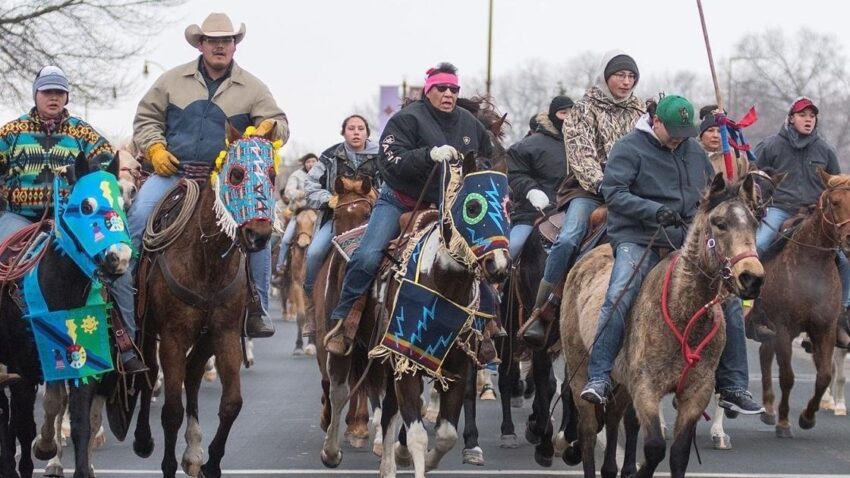
After Christmas, Commemorating a Mass Execution
“As I write this holiday greeting, a large swath of the United States has been hit hard by [a] major blizzard,” Levi Rickert, editor and publisher of Native News Online, wrote on Christmas Eve. “Tribal citizens in South Dakota are facing extreme wintry conditions with some roads impassable. Oglala Sioux Tribe President Frank D. Star Comes Out has declared a state of emergency.
“Celebrating on Christmas with family and friends may look different this year for those who got caught in the storm.
“In Minnesota, riders who are part of the Dakota 38 + 2 Memorial Ride are making their way to Mankato, Minnesota. They will be away from their families on Christmas so that they can honor the memory of 38 Dakota men who were executed on the day after Christmas in 1862 on the orders of President Abraham Lincoln. They will ride into Mankato on December 26th where a short ceremony will be held. . . .”
Also on Christmas Eve, the South Dakota Standard wrote over a piece by Tom Lawrence, “After 17 long, cold rides from the Lower Brule Reservation in central South Dakota to Mankato, Minn. to commemorate the Dakota War and the tragic events of 1862, the Dakotas 38 + 2 Memorial Ride will come to an end this year. Riders will visit the scene of the greatest mass execution in American history on Dec. 4, 160 years ago after 38 warriors were hanged.
“While this version of the ride is concluding, organizers said if a new generation wishes to pick up the banner and continue it, or form some other way to honor their ancestors, that is up to them. . . .”
- Roy S. Johnson, al.com: Though my ancestors are listed on Choctaw rolls, tribe won’t let me belong
- Dan Ninham, ICT: Native victims of mass execution remembered in Minnesota (Dec. 28)

WaPo Latinos Irked by End of Spanish Products
“The Washington Post will end its podcast, El Washington Post, this month and Post Opinión in the New Year,” Washington Post spokesperson Molly Gannon messaged Journal-isms last week.
“The Post will continue to pursue ways to make its most high-value content accessible in various languages, including through translations. We remain committed to elevating the vital perspectives of writers globally, including those in the Spanish-speaking world.”
The Post’s decision prompted sharp reactions from the Post’s Latino Caucus, which tweeted Dec. 16:
“Not long ago, the @washingtonpost touted a global expansion that prioritized Spanish-language media in order to reach younger, more diverse audiences. Now, WaPo has cut verticals meant to do just that — @elpost & @postopinion_es — without notice to our newsroom or subscribers.
“We are devastated. For Latino and Spanish-speaking Post employees, these efforts meant much more than a strategic expansion. El Post and Post Opinión were spaces where voices from Latin America and the Spanish-speaking world could be amplified and granted authority and reach.
“They allowed many who may not usually see the issues that matter to them covered and represented by a major U.S. news outlet space and attention. And it gave many of our Spanish-speaking journalists a platform to share their work with people at the center of their coverage.
“In the absence of explanations, we are left with questions: What will happen to efforts to diversify and broaden our reach as these publications end? Are any efforts being made to retain talented staff? Will future Post stories no longer be translated into Spanish?”
Earlier this month, Washington Post Publisher Frederick J. Ryan Jr. “surprised the staff by disclosing that layoffs beyond the November dismissal of the entire Washington Post Magazine staff and the paper’s dance critic were in the cards for early 2023,” as Jack Shafer reported for Politico.
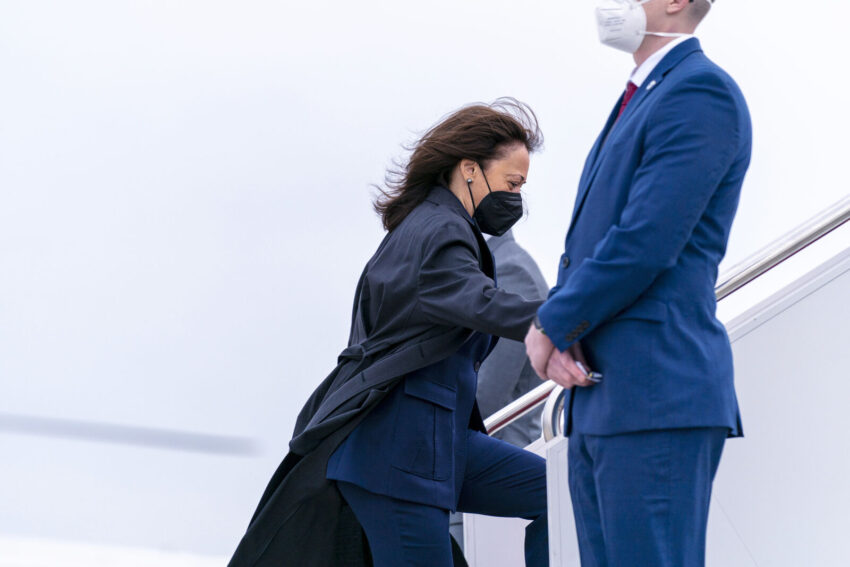
V.P. Harris Questions Fairness of Coverage
“There are things that I’ve done as vice president that fully demonstrate the strength of my leadership as vice president that have not received the kind of coverage that I think Dobbs did receive,” Vice President Kamala Harris told Washington Post columnist Jonathan Capehart, he wrote Dec. 22.
The reference was to the June 24 Supreme Court decision overturning Roe v. Wade.
Harris specifically mentioned a security conference in Munich, Germany, in February, Capehart wrote.
“Biden sent Harris to Germany on a critical mission at an important moment. In a Feb. 19 speech and in a private meeting with Ukrainian President Volodymyr Zelensky that same day, Harris warned of the looming threat to the rules-based international order posed by Russian troops massed for invasion. Harris sounded the alarm ahead of Russia’s assault on Ukraine that began on Feb. 24.”
Capehart continued, ” ‘What you’ve been able to see,’ she admonished, is ‘based on what gets covered.’
“Harris is right about that. Despite having a television and a print pool reporter at most of her public events, the vice president garners little attention. Sometimes the office is frustrating — as one of her predecessors famously put it, ‘not worth a bucket of warm,’ um, spit.
“And much of the attention she has received, especially in her first year, has been rough. Stories about staff departures were routinely hyped as disarray in narratives that unfairly called into question Harris’s competence. . . .”
The New York Post pushed back. Caitlin Doornbos wrote Friday, “Capehart’s column, which also made no mention of Harris’ assignment to tackle the ‘root causes’ of illegal immigration, appeared a day after excerpts from a forthcoming book were published revealing that President Biden himself has expressed frustration with Harris since taking office, reportedly calling her a ‘work in progress.’ ”
(Credit: YouTube)
‘1619 Project’ Debuts Jan. 26 on Hulu
“Disney’s Onyx Collective announced a Jan. 26 premiere date for Hulu’s upcoming six-part limited docu-series ‘The 1619 Project,’ an expansion of ‘The 1619 Project’ created by Pulitzer Prize-winning journalist Nikole Hannah-Jones and The New York Times Magazine,” the Times announced Dec.15. “The limited series will debut with the first two episodes streaming exclusively on Hulu, with two additional episodes released every Thursday.
“In keeping with the original project, the series seeks to reframe the country’s history by placing the consequences of slavery and the contributions of Black Americans at the very center of our national narrative. The episodes — ‘Democracy,’ ‘Race,’ ‘Music,’ ‘Capitalism,’ ‘Fear’ and ‘Justice’ — are adapted from essays from The New York Times No. 1 best-selling ‘The 1619 Project: A New Origin Story’ and examine how the legacy of slavery shapes different aspects of contemporary American life.
“The series, hosted by Nikole Hannah-Jones, is a Lionsgate Production in association with One Story Up Productions, Harpo Films and The New York Times. It was executive produced by Nikole Hannah-Jones; Academy Award®-winning director Roger Ross Williams; Caitlin Roper, an editor of ‘The 1619 Project’ and The New York Times’s executive producer for film and television; Kathleen Lingo, The New York Times’s editorial director for film and television; and Oprah Winfrey. Peabody Award-winning executive producer Shoshana Guy served as the showrunner. . . .”
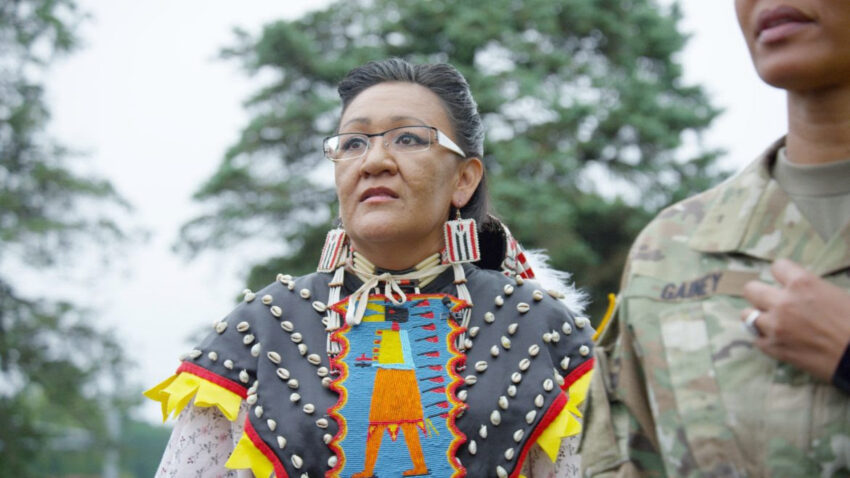
Public Media Friendlier to Documentarians of Color
“Commercial media outlets are ‘much more likely’ than their public media counterparts to distribute documentaries directed by men and white filmmakers, according to a study by the Center for Media & Social Impact at American University’s School of Communication,” Julian Wyllie reported Thursday for Current.
“The study found that of the films it analyzed, 29% of public TV documentaries were directed by Black, Indigenous and people of color filmmakers, compared to 17% of films by streaming companies and 13% of docs released by cable distributors.
“Similarly, about one in four films on streaming and cable platforms were exclusively directed by women, while 39% of public TV docs were directed by women. Researchers said 8% of public TV films were directed by men and women, compared to 7% for commercial outlets.
“ ‘The Lens Reflected’ study, while limited in scope, examined 1,232 documentaries that were released from 2014–20. . . .”
The Omaha-World Herald wrote last year, “The stories are distinct, but their origin is the same: a neighborhood so vibrant, so unified that individual accomplishments and devastations touched every house from Tech High to Kountze Park. A neighborhood where, depending on the night, they might see Martin Luther King Jr., Malcolm X, Ray Charles, James Brown, Joe Louis, Jesse Owens or Jackie Robinson – just walking down 24th Street. A neighborhood despite its humble size and remote location in middle America, became a progressive beacon in the national protest movement, recognized by would-be presidents and would-be revolutionaries.” (Credit: YouTube)
Omaha Paper Runs Students’ Take on Race Coverage
“Students in a University of Nebraska-Lincoln journalism class earlier this year examined the Omaha World-Herald’s past reporting on race-related news events and found shortcomings in coverage of Black people and other people of color,” Christopher Burbach reported Dec. 18 for the World-Herald.
The students interviewed figures in the city’s Black community. The newspaper published the results.
Among those quoted was the late community activist Matthew Stelly, who in 1999 labeled the World-Herald the most racist newspaper in America. “The World-Herald uses its reporters to interview whom they want, and they use those blue pens to cut out or edit any part of an article which reveals the city for the racist bastion that it is,” Stelly wrote at the time.
“According to the World-Herald’s former executive editor who left in February, Randy Essex, the paper in 2022 had three Black journalists in the newsroom of about 50. That amounts to about 6% of the newsroom is currently Black representing a city that is 12% Black,” the students wrote.
“Its percentage of people of color shrank from 6.1% in 2001 to 1.57% in 2018, according to figures it provided the American Society of News Editors, now the News Leaders Association. It also disclosed that the percentage of its newsroom leaders who were white went from 100% in 2001 to 100% in 2018, placing The World-Herald as having one of the least diverse newsrooms in the country. Newsroom leaders in the industry averaged about 85% white.”
Burbach also wrote, “The class was held in the spring semester and had been created at the suggestion of World-Herald news managers in the tumultuous aftermath of the killing of George Floyd by a Minneapolis police officer.”
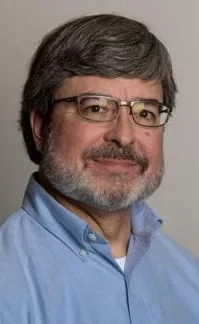 Editor Paul Goodsell (pictured) responded in a column, “As a World-Herald lifer who is proud of our news organization, it was hard for me to read some of those reviews. Their criticism went beyond the easy target of pointing out sensationalized World-Herald headlines in 1891 that contributed to mob violence and the lynching of a Black man, George Smith. No responsible journalist today would defend that reprehensible coverage from the 19th century.
Editor Paul Goodsell (pictured) responded in a column, “As a World-Herald lifer who is proud of our news organization, it was hard for me to read some of those reviews. Their criticism went beyond the easy target of pointing out sensationalized World-Herald headlines in 1891 that contributed to mob violence and the lynching of a Black man, George Smith. No responsible journalist today would defend that reprehensible coverage from the 19th century.
“I don’t agree with everything written in these student papers. At times, the shortcomings they found didn’t take into account the practical realities of daily journalism, with its deadlines, space limitations and competing priorities.
“But in the end, it doesn’t matter if it’s entirely fair to compare specific World-Herald stories to a hypothetical ideal. It’s still always important to aim for that ideal.
“In that spirit, I’m glad to see the work done by this journalism class. Their outside perspective highlights some things that the newspaper could have done better in the past, and it prods us to do our best today.”

Reporting Cited in $1.9M False-Claim Settlement
Last year, WGBH in Boston headlined that “Worcester Spent More Than $100 Million Building Polar Park” baseball stadium. “Minority Companies Got Peanuts.”
On Thursday, its headline was, “Polar Park builders will pay $1.9 million to settle charges they misled Worcester on minority inclusion.“
“In announcing the settlement today, the attorney general’s office acknowledged that the case first came to their attention through an investigation by the GBH News Center for Investigative Reporting,” station spokesperson Sam Brewer messaged Thursday.
” ‘The Color of Public Money’ has uncovered inequities in how public funds are spent in government contracting, finding that minority-owned businesses – and particularly Black-owned businesses receive a shockingly small portion of contract opportunities from Massachusetts state and local agencies.
“The penalty issued today is a textbook example. In April 2021, as the ballpark prepared to open for the first time, GBH News reported that minority-owned businesses had done less than $1 million worth of work on the $101 million construction project, despite reports from the city and its construction manager Gilbane/Hunt that minority-owned firms had been awarded 4% of the construction contracts.
“GBH News requested a list of companies that had received those payments and discovered it was full of inaccuracies. In some cases, companies that were categorized as minority-owned were not actually minority-owned. In other cases, minority-owned businesses got paid far less than Gilbane/Hunt took credit for.
“The day after the GBH Story was published, Gilbane/Hunt admitted that its initial numbers were inaccurate. . . .
“The reporting spurred an investigation by the attorney general’s office, which found that [Gilbane/Hunt] ‘falsely [stated] in its bid for the Polar Park project that it planned to maximize the participation of women and minority-owned businesses (W/MBEs), and then, once selected to manage the project, misrepresented the status of W/MBE participation to the Worcester Redevelopment Authority until the project was substantially complete,’ the office said Thursday. Gilbane/Hunt accepted the settlement but did not admit wrongdoing.”
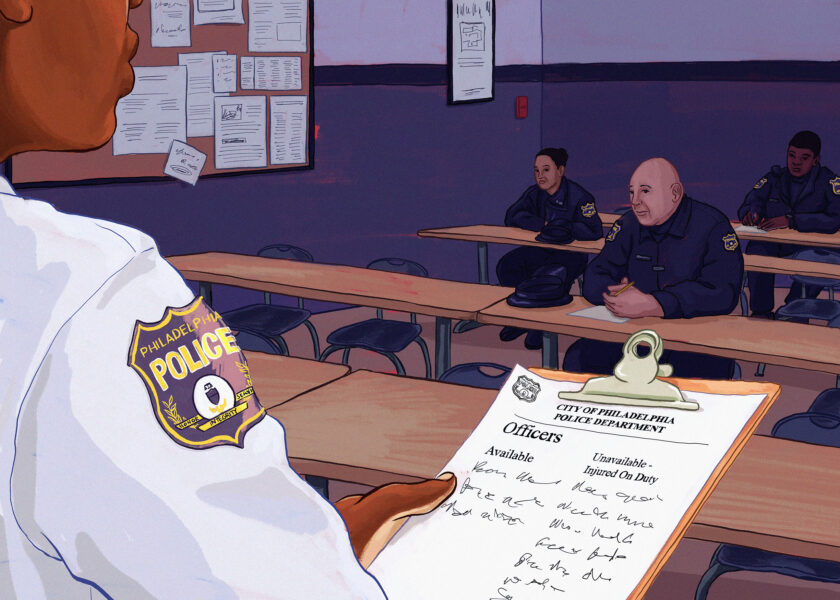
After Series, Cop-Abuse of Disability System Drops
“For the last year, The Inquirer has investigated potential fraud and abuse in the police disability system as part of a series, MIA: Crisis in the Ranks,” William Bender, David Gambacorta, and Barbara Laker reported Dec. 20 for the Philadelphia Inquirer.
The initial story carried the subhead, “An Inquirer investigation has found numerous cops who have claimed to be too injured to work, but at the same time launched new businesses, toiled at physically strenuous jobs, and more.”
The reporters continued, “Since the first installment was published in February, the weekly total of cops who are labeled ‘no duty’ has changed dramatically.
“Now, according to a recent list obtained by The Inquirer, the number of officers out with injury claims has dropped by 31%, while the number of injured officers cleared for court duty has more than tripled.”
Two doctors selected by the Fraternal Order of Police, “meanwhile, have left the Heart and Lung program,” created under the Pennsylvania Heart and Lung Act, a state law that exempts police and firefighter disability payments from state and federal taxes. And “Holmesburg Family Medicine, a Northeast Philadelphia practice that evaluated most injured officers, closed its Frankford Avenue doors in July.
“Police Commissioner Danielle Outlaw in February called abuse of the disability benefit ‘absolutely repulsive.’ She acknowledged that the steep drop in officers listed as injured-on-duty is a sign of progress. . . .”
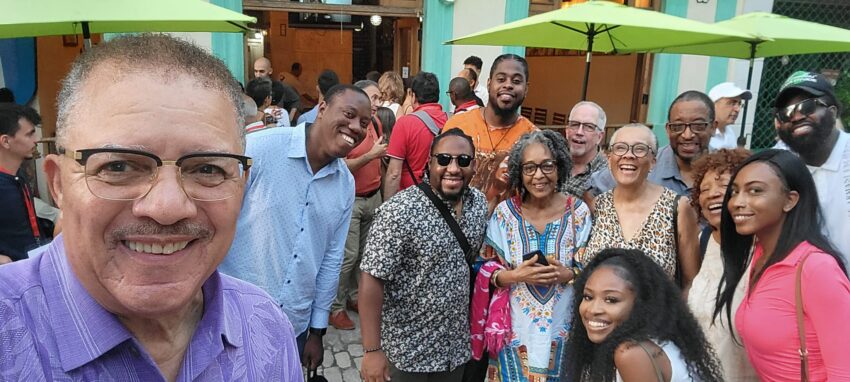
Morgan State J-Students, Faculty Back From Cuba
A 10-person delegation from Morgan State University’s School of Global Journalism and Communication returned earlier this month from a five-day visit to Cuba.
“Dean Emeritus [DeWayne] Wickham is leading a documentary project on the late Dr. Irene Diggs, the first African American woman to earn a PhD in anthropology from the University of Havana,” messaged Dean Jacqueline Jones.
“She was a mentee of Fernando Ortiz, a revered scholar who is credited with pioneering the study of African cultures throughout the Americas, especially in Cuba. Diggs, who also taught for 29 years at Morgan State, was a primary research assistant to W.E.B. DuBois, but less known outside of her discipline as a scholar and activist in her own right.
“We met with and interviewed scholars who knew of her and her work, as well as that of Ortiz, and we saw one of the buildings where she lived, and read some of her correspondence in the files at the University of Havana.
“It was a brief and jam-packed schedule. . . .”
Jones said she also “met with Dr. Miriam Nicado Garcia, the regent (president) of the University of Havana, to sign the renewal of our Memorandum of Understanding, which allows Morgan State to collaborate on projects with the university.
“The next day, I met with faculty and students from the university’s School of Communications at the University of Havana to discuss plans for an upcoming reporting project that will be launched in spring semester.”
In photo, from left: Wickham, who is also director of Morgan’s Center for New Media and Strategic Initiatives; Osaretin Iyare, graduate assistant to Wickham; Ivery Johnson, graphic design and animation editor; Trevon Facey, Tim Reid Productions; Cuban director Gloria Rolando; Carl Hyden, associate dean, Morgan’s School of Global Journalism & Communication; Hannah Powell, Morgan State student; Jones, Randall Pinkston, associate director, Center for New Media and Strategic Communication; Nancy Morejón, Cuban poet and essayist; Dreema Carrington, Morgan State student, and Derrick Cheston, videographer/editor Center for New Media and Strategic Communication.
- Yadiris Luis Fuentes, ADN Cuba: Journalist Lazaro Yui Valle Roca Without Medication in Prison
Short Takes
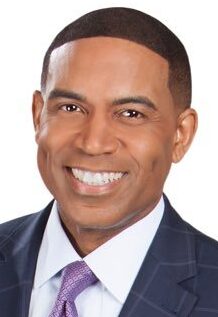 “On the day before Christmas NBC 6 Anchor Jawan Strader (pictured) along with his helpers brought smiles to over a dozen people who lost everything in a duplex Lauderhill fire,” WTVJ-TV in Miami reported. ” ‘We are gonna make sure they are blessed and have everything they need’ . . . A trunk was filled with toys and clothes. When the children saw them, their faces were priceless. ‘So Santa sent us here and gave us all this stuff to give to you guys,’ said Strader. Not only did the kids receive gifts, but the adults received a $500 check. . . . The National Association of Black Journalists South Florida Chapter along with the Lip Foundation partnered up to make this special day happen. . . .” GoFundMe page.
“On the day before Christmas NBC 6 Anchor Jawan Strader (pictured) along with his helpers brought smiles to over a dozen people who lost everything in a duplex Lauderhill fire,” WTVJ-TV in Miami reported. ” ‘We are gonna make sure they are blessed and have everything they need’ . . . A trunk was filled with toys and clothes. When the children saw them, their faces were priceless. ‘So Santa sent us here and gave us all this stuff to give to you guys,’ said Strader. Not only did the kids receive gifts, but the adults received a $500 check. . . . The National Association of Black Journalists South Florida Chapter along with the Lip Foundation partnered up to make this special day happen. . . .” GoFundMe page.
- “The Federal Communications Commission is seeking public comment on the regulator’s media ownership rules, including whether its current rules are ‘necessary in the public interest as the result of competition,’ ” Matthew Keys reported Friday for Radio Ink. Keys also reported, “The findings of the agency’s last quadrennial review in 2018 were never formally adopted. Part of the hold up in that instance was a proposal to relax cross-ownership rules that some public interest groups said could harm women and minority broadcast owners if the FCC adopted them. . . .”
- “Legislators in Washington reacted with outrage to admissions by TikTok and its Chinese parent company, ByteDance, that they improperly used the video-sharing app to spy on reporters covering the company,” Emily Baker-White reported Friday for Forbes. “Forbes first reported the existence of the surveillance scheme, which targeted three Forbes reporters, in October. At the time, TikTok did not deny the report, but tweeted that the app had ‘never been used to “target” any members of the U.S. government, activists, public figures or journalists.’ TikTok and ByteDance now admit that this was false.”
The first six episodes are streaming on Hulu. The show returns from its midseason break on Feb. 23.
- The new ABC show “Alaska Daily” draws from the real-life reporting of local journalists at the Anchorage Daily News, Chase Hutchinson reports for the Seattle Times. “Created by Tom McCarthy, who helmed the Oscar-winning film ‘Spotlight,’ it stars Bellingham-raised actor Hilary Swank as hard-boiled reporter Eileen Fitzgerald, who moves to Alaska from New York after her previous job fell through. . . .” Rhonda LeValdo (Acoma Pueblo), professor of media communications at Haskell Indian Nations University in Kansas and a former president of the Native American Journalists Association, said, “The whole white savior thing with having a person like Hilary Swank having to make sure this issue is brought to mainstream attention is kind of the bad thing about it. I really wish that Hollywood or any type of mainstream media would let us tell that story instead of having to rely on a non-Native to do that for us.”
 “CNN anchor Jim Acosta said he was ‘locked’ out of using his Twitter account due to the platform’s controversial new policy barring ‘free promotion of prohibited third-party’ competitors including Mastodon, Instagram and Facebook,” Ben Blanchet wrote Dec. 19 for HuffPost. “Acosta noted that Twitter locked his account sometime Saturday night and, when he woke up on Sunday, he said the platform found one of his tweets mentioning his Mastodon and Post accounts in violation of the policy. . . .” In addition, Business Insider reporter Linette Lopez (pictured), one of several journalists who saw her account suspended on the platform, said she hasn’t heard anything from Twitter about her account, which she said she still can’t access. Lopez has reported on the billionaire and his businesses for years. . . .”
“CNN anchor Jim Acosta said he was ‘locked’ out of using his Twitter account due to the platform’s controversial new policy barring ‘free promotion of prohibited third-party’ competitors including Mastodon, Instagram and Facebook,” Ben Blanchet wrote Dec. 19 for HuffPost. “Acosta noted that Twitter locked his account sometime Saturday night and, when he woke up on Sunday, he said the platform found one of his tweets mentioning his Mastodon and Post accounts in violation of the policy. . . .” In addition, Business Insider reporter Linette Lopez (pictured), one of several journalists who saw her account suspended on the platform, said she hasn’t heard anything from Twitter about her account, which she said she still can’t access. Lopez has reported on the billionaire and his businesses for years. . . .”
- “Congressman Ted Lieu [D-Calif.] and nine other Congress members called upon the six largest cable companies to expand their AAPI programming, citing the increase in Asian American population,” Jake Chang reported Friday for AsAmNews. “The members of the Congressional Asian Pacific American Caucus sent a letter to the CEOs of major cable companies, such as DISH Network, Comcast and Verizon, calling for increased AAPI accessibility and representation in cable television. . . .”
- “Just who counts as Asian American has long been the subject of debate within America’s fastest-growing racial group,” Meena Venkataramanan wrote Dec. 19 for The Washington Post. She also reported, “But who counts as ‘Asian’ can be difficult to pin down. . . . South Asian Americans, particularly with ancestry in India and Pakistan, find it ‘challenging’ to be seen as Asian American in the United States, according to the 2016 National Asian American Survey [PDF]. It found that 42 percent of White Americans surveyed viewed Indians as ‘not likely to be Asian/Asian American,’ and 45 percent expressed the same view of Pakistanis. Even some Asian American respondents don’t consider South Asians as part of their cohort. . . .”
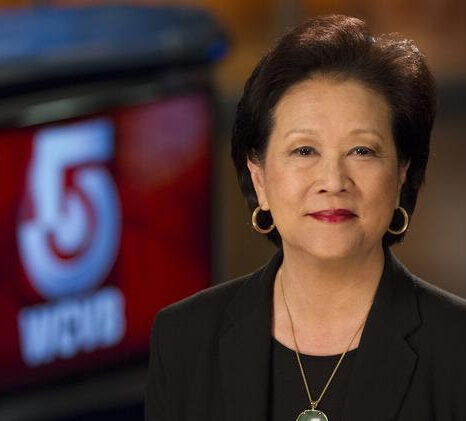 “Trailblazing political reporter and ‘On The Record’ co-host Janet Wu (pictured) retired from WCVB this week, finishing a career in journalism that spans five decades,” Clara McCourt reported Thursday for boston.com. “Wu has covered politics for WCVB for nearly 40 years, making her mark as the first Asian American and first woman to serve as a Massachusetts State House television reporter. WCVB aired a celebration of Wu’s career Thursday night, hosted by her ‘On The Record’ co-host, Ed Harding. Wu shared her favorite memories of working with the station, ranging from her hard-hitting interviews to assignments abroad. . . .”
“Trailblazing political reporter and ‘On The Record’ co-host Janet Wu (pictured) retired from WCVB this week, finishing a career in journalism that spans five decades,” Clara McCourt reported Thursday for boston.com. “Wu has covered politics for WCVB for nearly 40 years, making her mark as the first Asian American and first woman to serve as a Massachusetts State House television reporter. WCVB aired a celebration of Wu’s career Thursday night, hosted by her ‘On The Record’ co-host, Ed Harding. Wu shared her favorite memories of working with the station, ranging from her hard-hitting interviews to assignments abroad. . . .”
- Wonya Lucas, president and CEO of Hallmark Media; Soledad O’Brien, CEO, Soledad O’Brien Productions; Deborah Roberts, ABC News senior national affairs correspondent and contributing anchor for “20/20”; Al Roker, weather and feature anchor, “Today,” co-host of “Today” third hour; are among the newest inductees into the Broadcasting+Cable Hall of Fame, Michael Malone reported for the publication on Dec. 19.
- Sewell Chan, editor in chief of The Texas Tribune, has been elected to the Pulitzer Prize Board, Columbia University announced Dec. 2. Chan, 45, joined The Texas Tribune as its editor in chief in October 2021.
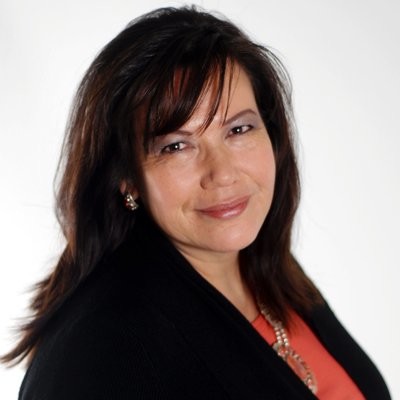 Jodi Rave Spotted Bear (pictured) and Peter Szekely were appointed to the board of directors of the Society of Professional Journalists, the organization announced Dec. 12. Spotted Bear serves as executive director of the Indigenous Media Freedom Alliance, a nonprofit media organization that focuses on freedom of information and the need for more independent press operations across Indigenous America. Szekely is a retired journalist.
Jodi Rave Spotted Bear (pictured) and Peter Szekely were appointed to the board of directors of the Society of Professional Journalists, the organization announced Dec. 12. Spotted Bear serves as executive director of the Indigenous Media Freedom Alliance, a nonprofit media organization that focuses on freedom of information and the need for more independent press operations across Indigenous America. Szekely is a retired journalist.
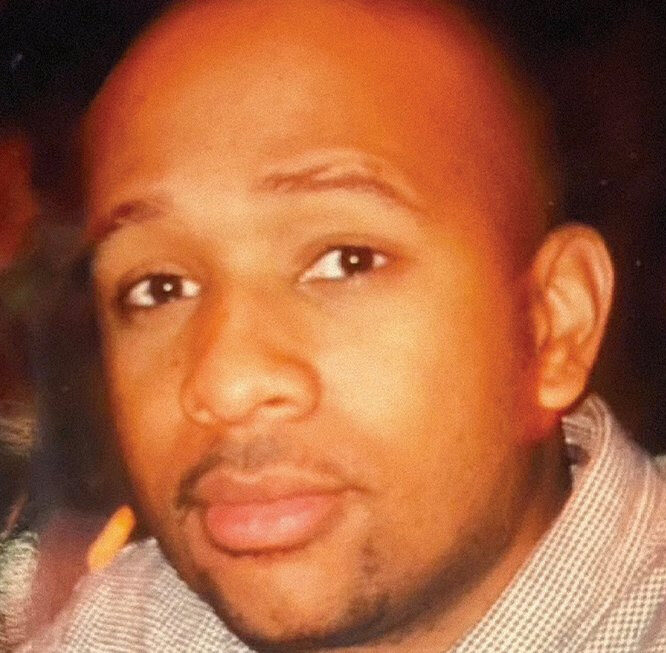 “I couldn’t let the year pass without writing about” James Powell (pictured), “a great friend and coworker who became my neighbor after my marriage ended,” Thomasi McDonald wrote Wednesday for IndyWeek. “Powell — I never called him James, sometimes he went by ‘Jaymes’ — was a first-rate character in a newsroom filled with characters. He was a helluva writer, a contrarian by definition who loved wine, a blunt of good marijuana, women by the bushel, and song, preferably New Edition. He must have weighed 150 pounds soaking wet but fancied himself a swashbuckling wide receiver who, with a few breaks, could have ended up in the NFL. . . . Powell’s sister, Natasha Powell, an emergency room physician living in Washington, DC, told me her brother died of gastrointestinal bleeding.” He was 47 and died on Aug. 1.
“I couldn’t let the year pass without writing about” James Powell (pictured), “a great friend and coworker who became my neighbor after my marriage ended,” Thomasi McDonald wrote Wednesday for IndyWeek. “Powell — I never called him James, sometimes he went by ‘Jaymes’ — was a first-rate character in a newsroom filled with characters. He was a helluva writer, a contrarian by definition who loved wine, a blunt of good marijuana, women by the bushel, and song, preferably New Edition. He must have weighed 150 pounds soaking wet but fancied himself a swashbuckling wide receiver who, with a few breaks, could have ended up in the NFL. . . . Powell’s sister, Natasha Powell, an emergency room physician living in Washington, DC, told me her brother died of gastrointestinal bleeding.” He was 47 and died on Aug. 1.
- “Forty-one years and one week after Philadelphia Police Officer Daniel Faulkner was shot to death, the latest defense team for his convicted killer, Mumia Abu-Jamal, sought Friday to persuade a skeptical judge to overturn his life sentence,” Craig R. McCoy wrote Dec. 16 for the Philadelphia Inquirer. “Abu-Jamal, 68, has filed eight appeals since his conviction on charges of killing Faulkner, who was 25 when he died on Dec. 9, 1981. . . .”
 The National Association of Black Journalists convention in Birmingham, Ala., Aug. 2-6, will be part of a 60th anniversary commemoration in the city. “The year 1963 was pivotal in our history, featuring several marches and demonstrations as African Americans demanded the rights promised to them as American citizens,” the city says of the remembrance, called “Forging Justice.” “Youth as young as eight years-old participated in a Children’s Crusade where youngsters marched and were jailed for freedom. Under the leadership of college students, a selective buying campaign was launched where Black residents only bought from businesses that provided equal access to all. Dr. Martin Luther King Jr. was arrested and penned his famous ‘Letter from the Birmingham Jail.’ Domestic terrorism also rocked the city. The A.G. Gaston Motel was bombed on Mother’s Day, and on Sept. 15, 1963, four little girls were killed in a tragic bombing of 16th Street Baptist Church.”
The National Association of Black Journalists convention in Birmingham, Ala., Aug. 2-6, will be part of a 60th anniversary commemoration in the city. “The year 1963 was pivotal in our history, featuring several marches and demonstrations as African Americans demanded the rights promised to them as American citizens,” the city says of the remembrance, called “Forging Justice.” “Youth as young as eight years-old participated in a Children’s Crusade where youngsters marched and were jailed for freedom. Under the leadership of college students, a selective buying campaign was launched where Black residents only bought from businesses that provided equal access to all. Dr. Martin Luther King Jr. was arrested and penned his famous ‘Letter from the Birmingham Jail.’ Domestic terrorism also rocked the city. The A.G. Gaston Motel was bombed on Mother’s Day, and on Sept. 15, 1963, four little girls were killed in a tragic bombing of 16th Street Baptist Church.”
- “The government cannot jail journalists for asking a question. But local Texas officials did just that, arresting citizen journalist Priscilla Villarreal for exercising her core First Amendment right to ask government officials for information as part of her reporting,” Conor Fitzpatrick reported Dec. 15 for the Foundation for Individual Rights and Expression. Fitzpatrick also wrote, “This week, a diverse coalition of organizations submitted amicus curiae — ‘friend of the court’ ” — briefs in support of Priscilla’s First Amendment right to investigate and report the news.” Supporters included the National Association of Hispanic Journalists and the Society of Professional Journalists.
- “To worship freely, Black Philadelphians staged the first-ever civil rights walkout. Today A.M.E. Church leaders say they’re fighting for basic rights all over again,” the Philadelphia Inquirer wrote over the latest installment of its “A More Perfect Union” series, “a special project from The Inquirer examining the roots of systemic racism through institutions founded in Philadelphia.”
-
 Hanaa’ Tameez, staff writer for the Nieman Journalism Lab at Harvard University, and Priyanka Vora, director, audience at Axios, have been appointed to the board of directors of the South Asian Journalists Association. Jennifer Chowdhury, a freelancer; Pia Sarkar, business news editor at the Associated Press; Karen Mahabir, fact check and misinformation editor; and Mihir Zaveri, reporter at The New York Times, were re-elected to new two-year terms. Sabrina Malhi (pictured), a health reporter at The Washington Post, is president.
Hanaa’ Tameez, staff writer for the Nieman Journalism Lab at Harvard University, and Priyanka Vora, director, audience at Axios, have been appointed to the board of directors of the South Asian Journalists Association. Jennifer Chowdhury, a freelancer; Pia Sarkar, business news editor at the Associated Press; Karen Mahabir, fact check and misinformation editor; and Mihir Zaveri, reporter at The New York Times, were re-elected to new two-year terms. Sabrina Malhi (pictured), a health reporter at The Washington Post, is president.
- Forbes has come up with a multicultural list of “30 under 30” for its media category. They include Jackson Jhin, Travis Lyles, Kimberly Aleah, Yara Bishara, Clarissa Brooks, Ray Chao, Tiffany Kelly, Da’Shaun Harrison, Jordyn Holman, Adriana Lacy, Caitlin Ostroff, Erin Logan, Ashten Smith-Gooden, Anfernee Robinson, Tyler Tynes, Gabrielle Williams and Yehong Zhu.
- The Asian American Journalists Association has announced “JCal, a new program for high school students, created in partnership with CalMatters, a nonprofit and nonpartisan newsroom. “JCal is an all-inclusive, expenses-paid journalism program that immerses high school students from across California into the state’s news ecosystem. This unique partnership will provide students with hands-on journalism experience in the CalMatters Sacramento newsroom. During the course of a six-day program, students will produce publishable stories and network with journalists and professionals from across California.” The application deadline is Feb. 1.
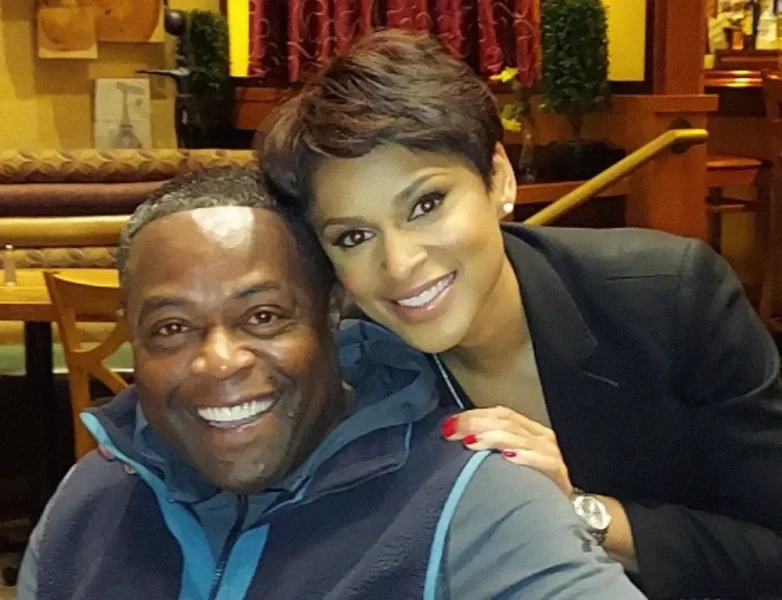
 Amna Nawaz (pictured) who with Geoff Bennett will co-anchor “PBS NewsHour” starting Jan. 2, is a first-generation American, a Muslim whose family immigrated from Pakistan. Asked whether she could have imagined having such a role, Nawaz told Jennifer Gerson of the 19th on Wednesday, “I think it’s a testament to how much the industry has changed in the last 20 years — but also this idea that we are still hitting these kinds of firsts speaks to how this industry still has a long way to go. There’s still a lot of work to be done when it comes to newsrooms and news organizations accurately representing the same audiences and communities we are meant to be serving. That’s an ongoing thing for me that I have thought about throughout my career.”
Amna Nawaz (pictured) who with Geoff Bennett will co-anchor “PBS NewsHour” starting Jan. 2, is a first-generation American, a Muslim whose family immigrated from Pakistan. Asked whether she could have imagined having such a role, Nawaz told Jennifer Gerson of the 19th on Wednesday, “I think it’s a testament to how much the industry has changed in the last 20 years — but also this idea that we are still hitting these kinds of firsts speaks to how this industry still has a long way to go. There’s still a lot of work to be done when it comes to newsrooms and news organizations accurately representing the same audiences and communities we are meant to be serving. That’s an ongoing thing for me that I have thought about throughout my career.”
- “Buffalo, What’s Next? is a daily radio show and podcast produced by WBFO in Buffalo,” Leigh Giangreco reported for Current. “Its first episode, which aired May 26, tackled systemic racism, grief and the challenges facing Black business owners on Buffalo’s East Side,” where a white gunman targeted and killed 10 Black people and injured three others on May 14. “The show airs at 10 a.m. weekdays, replacing an hour of NPR’s 1A, and again at 9 p.m. The longer format, sustained presence and a public radio ethos have allowed WBFO’s journalists the time and space to explore tough issues shunned by their commercial peers, according to News Director Dave Debo. They’ve also avoided the trap of helicoptering into marginalized communities. . . .”
- “In July 2021, we set a goal of increasing the overall staff percentage of people of color by 5%, and women by 3%, by mid-2022,” the Hearst Connecticut Media Group, publisher of such publications as the New Haven Register and Stamford Advocate, reported. “As of July 2022, the overall staff percentage of people of color was down 4%, while people of color in newsroom leadership roles went up 1%. The overall percentage fell an additional 3% by the end of 2022, while areas such as the newsroom saw an increase during this same period of 1% overall for people of color. In order to grow this important area, we have further deepened and expanded our recruitment and retention efforts. . . .”
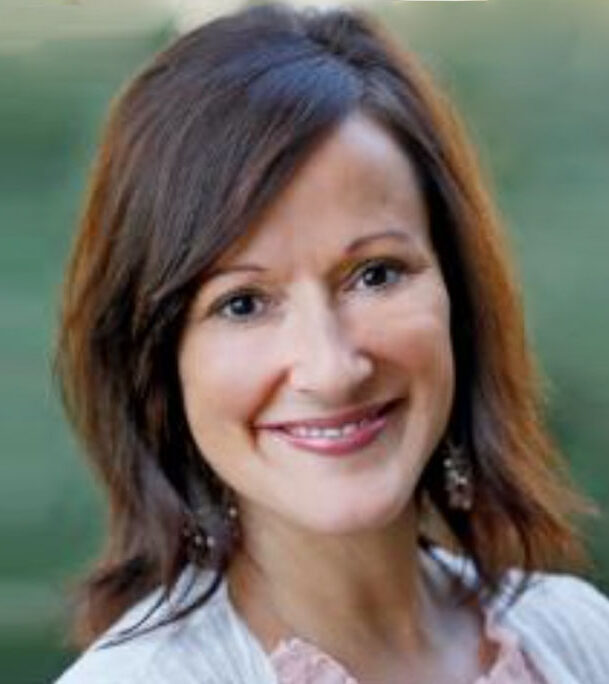 Pauline Arrillaga (pictured) a writer, editor and professor who led the Robert Wood Johnson Foundation Southwest Health Reporting Initiative at the Cronkite School, will take over as executive editor of the Carnegie-Knight News21 program, the school announced Dec. 14. “News21 is a donor-funded national reporting initiative headquartered at the Cronkite School, which brings top journalism students from across the country to report and produce in-depth, multimedia projects for major media outlets, including The Washington Post, NBC News and USA Today. The Knight Foundation provides core support for the program. . . .”
Pauline Arrillaga (pictured) a writer, editor and professor who led the Robert Wood Johnson Foundation Southwest Health Reporting Initiative at the Cronkite School, will take over as executive editor of the Carnegie-Knight News21 program, the school announced Dec. 14. “News21 is a donor-funded national reporting initiative headquartered at the Cronkite School, which brings top journalism students from across the country to report and produce in-depth, multimedia projects for major media outlets, including The Washington Post, NBC News and USA Today. The Knight Foundation provides core support for the program. . . .”
 Samantha Guzman (pictured), a multimedia journalist who distinguished herself at Austin PBS, leading a community journalism effort focused on diversity, has been named editor of Arts Access, the new editorial partnership between KERA and The Dallas Morning News,” Michael Granberry reported Dec. 14 for the Dallas Morning News. Gilbert Bailon, formerly editor-in-chief of the St. Louis Post-Dispatch, was named executive editor of KERA in February.
Samantha Guzman (pictured), a multimedia journalist who distinguished herself at Austin PBS, leading a community journalism effort focused on diversity, has been named editor of Arts Access, the new editorial partnership between KERA and The Dallas Morning News,” Michael Granberry reported Dec. 14 for the Dallas Morning News. Gilbert Bailon, formerly editor-in-chief of the St. Louis Post-Dispatch, was named executive editor of KERA in February.
- “The Duke and Duchess of Sussex have criticised the Sun’s apology over a column by Jeremy Clarkson as ‘nothing more than a PR stunt,’ “Mattea Bubalo and Dulcie Lee reported Sunday for the BBC. “The column, in which Clarkson said he hated Meghan ‘on a cellular level’, received more than 20,000 complaints. In the original column, Clarkson said: ‘At night, I’m unable to sleep as I lie there, grinding my teeth and dreaming of the day when she [Meghan] is made to parade naked through the streets of every town in Britain while the crowds chant “Shame!” and throw lumps of excrement at her. . . . In his tweet following the criticism, Clarkson said he had made a ‘clumsy’ reference to a scene in Game of Thrones which ‘has gone down badly with a great many people’. . . .”
 In Canada, “The percentage of Mixed Race, Black, Middle Eastern journalists all moderately rose in 2022,” the Canadian Association of Journalists reported in its second annual national Canadian Newsroom Diversity Survey. “Mixed Race journalists went from 3.1 per cent in 2021 to 3.2 per cent, while Black journalists changed from 2.5 per cent to 3 per cent. Middle Eastern journalist percentages rose from 1.7 per cent in 2021 to 2.4 per cent in 2022.” The report also said, “From 2021 to 2022, the per cent of Asian journalists were the second most common in both years with 10 per cent in 2021 and 7.1 per cent in 2022. The percentage of white journalists rose from 74.9 per cent in 2021 to 77.9 per cent in 2022. Indigenous journalists slightly dropped from 6.4 per cent to 4.6 per cent. Latin journalists also dropped from 1.3 per cent in 2021 to 1.2 per cent in 2022.”
In Canada, “The percentage of Mixed Race, Black, Middle Eastern journalists all moderately rose in 2022,” the Canadian Association of Journalists reported in its second annual national Canadian Newsroom Diversity Survey. “Mixed Race journalists went from 3.1 per cent in 2021 to 3.2 per cent, while Black journalists changed from 2.5 per cent to 3 per cent. Middle Eastern journalist percentages rose from 1.7 per cent in 2021 to 2.4 per cent in 2022.” The report also said, “From 2021 to 2022, the per cent of Asian journalists were the second most common in both years with 10 per cent in 2021 and 7.1 per cent in 2022. The percentage of white journalists rose from 74.9 per cent in 2021 to 77.9 per cent in 2022. Indigenous journalists slightly dropped from 6.4 per cent to 4.6 per cent. Latin journalists also dropped from 1.3 per cent in 2021 to 1.2 per cent in 2022.”
 “This week, we explore an often-overlooked issue in the Arab world; racism towards Black Arabs,” Making Contact, a 29-minute weekly magazine/documentary-style public affairs program heard on 151 radio stations in the United States, Canada, South Africa and Ireland, announced Dec. 14. “In this episode, Kerning Culture reporter Ahmed Twaij (pictured) looks at racism in his own community, taking us from his Iraqi roots, through to modern day slurs still commonly used in many Arab communities around the world. . . .”
“This week, we explore an often-overlooked issue in the Arab world; racism towards Black Arabs,” Making Contact, a 29-minute weekly magazine/documentary-style public affairs program heard on 151 radio stations in the United States, Canada, South Africa and Ireland, announced Dec. 14. “In this episode, Kerning Culture reporter Ahmed Twaij (pictured) looks at racism in his own community, taking us from his Iraqi roots, through to modern day slurs still commonly used in many Arab communities around the world. . . .”
- “A top Mexican TV and radio journalist opened his daily morning show on Friday with a shocker: ‘Someone tried to kill me last night,’” Luis Chaparro reported Dec. 16 for Vice News. “Ciro Gómez-Leyva, one of [Mexico’s] best known journalists with over 30 years in the news, survived an assassination attempt Thursday night after leaving the TV station in Mexico City where he hosts an evening news show. . . .” Meanwhile, Reuters reported, “A cross-section of Mexican journalists, columnists and cultural commentators demanded in an open letter on Wednesday that President Andres Manuel Lopez Obrador stop harassing critical media, arguing he fans the flames of violence with his rhetoric. . . . The open letter accused Lopez Obrador of being ‘politically responsible’ for the attack on Gomez, adding that ‘practically all the expressions of hate against journalists, are born, incubated and spread’ from the president’s office. . . .”
 “Francklin Tamar (pictured) died on the way to hospital after being attacked near his residence in the Haitian capital last Sunday by people on motorcycles who shot him numerous times,” the International Federation of Journalists reported Thursday. “The journalist worked at Radio Solidarité, where he hosted the programs ‘Konpa, Konpa’ and ‘Samedi Culture’. Although the circumstances of his death have not yet been clarified, violence against press workers in Haiti this year intensified hand in hand with the deep social, economic and political crisis that the country is going through. With Tamar’s death, there are now seven journalists killed in 2022, most of whom died in the full capacity of their work, covering mobilizations and armed confrontations. . . .”
“Francklin Tamar (pictured) died on the way to hospital after being attacked near his residence in the Haitian capital last Sunday by people on motorcycles who shot him numerous times,” the International Federation of Journalists reported Thursday. “The journalist worked at Radio Solidarité, where he hosted the programs ‘Konpa, Konpa’ and ‘Samedi Culture’. Although the circumstances of his death have not yet been clarified, violence against press workers in Haiti this year intensified hand in hand with the deep social, economic and political crisis that the country is going through. With Tamar’s death, there are now seven journalists killed in 2022, most of whom died in the full capacity of their work, covering mobilizations and armed confrontations. . . .”
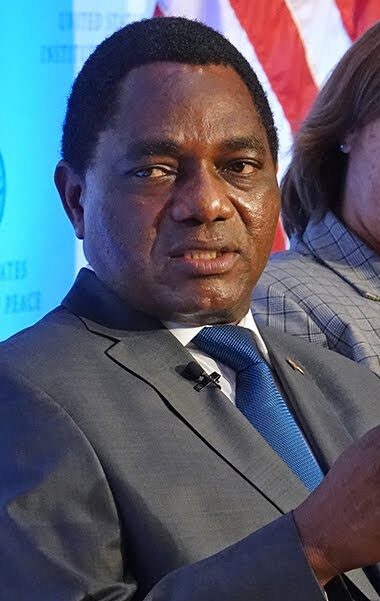 “Critics of Zambia’s law against insulting the president have welcomed the government’s repeal of the controversial measure as a step forward for democracy,” Kathy Short reported Monday for the Voice of America. “Rights groups say the colonial-era law has been used to silence government critics. President Hakainde Hichilema (pictured) announced the repeal over the weekend along with the abolition of the death penalty. . . . In the past year alone, at least 12 critics and opponents of Hichilema were arrested for insulting the president, some multiple times.”
“Critics of Zambia’s law against insulting the president have welcomed the government’s repeal of the controversial measure as a step forward for democracy,” Kathy Short reported Monday for the Voice of America. “Rights groups say the colonial-era law has been used to silence government critics. President Hakainde Hichilema (pictured) announced the repeal over the weekend along with the abolition of the death penalty. . . . In the past year alone, at least 12 critics and opponents of Hichilema were arrested for insulting the president, some multiple times.”
- “In a case that saw appeals by the UN and Reporters Without Borders (RSF), Amadou Vamoulke, a former managing director of Cameroon Radio-Television (CRTV), was found guilty of illegally giving himself holiday pay worth $25,000 in 2005 and 2006,” Agence France-Presse reported Wednesday. Vamoulke’s lawyer, Alice Nkom said, “Amadou Vamoulke was denied freedom even before he was sentenced. There are millions of violations of human rights in this trial… the whole world has seen that he was arbitrarily detained,” she told AFP, adding that he would appeal. . . .”
- “Mexico will close the year with a record number of journalists murdered,” César López Linares and Emily Engelbart reported Dec. 6 for LatAm Journalism Review. “The organization Article 19 for Mexico and Central America has counted 17 press workers killed so far in 2022 in that country. In at least 12 of these crimes, the causes are directly related to the practice of the profession. While international press freedom organizations demand justice, journalists agree that only the application of justice and the end of impunity can stop the bloody wave that threatens journalism in Mexico. . . .”
To subscribe at no cost, please send an email to journal-isms+subscribe@groups.io and say who you are.
Facebook users: “Like” “Richard Prince’s Journal-isms” on Facebook.
Follow Richard Prince on Twitter @princeeditor
Richard Prince’s Journal-isms originates from Washington. It began in print before most of us knew what the internet was, and it would like to be referred to as a “column.” Any views expressed in the column are those of the person or organization quoted and not those of any other entity. Send tips, comments and concerns to Richard Prince at journal-isms+owner@
View previous columns (after Feb. 13, 2016).
View previous columns (before Feb. 13, 2016)
- Diversity’s Greatest Hits, 2018 (Jan. 4, 2019)
- Book Notes: Is Taking a Knee Really All That? (Dec. 20, 2018)
- Book Notes: Challenging ’45’ and Proudly Telling the Story (Dec. 18, 2018)
- Book Notes: Get Down With the Legends! (Dec. 11, 2018)
- Journalist Richard Prince w/Joe Madison (Sirius XM, April 18, 2018) (podcast)
- Richard Prince (journalist) (Wikipedia entry)
- February 2018 Podcast: Richard “Dick” Prince on the need for newsroom diversity (Gabriel Greschler, Student Press Law Center, Feb. 26, 2018)
- Diversity’s Greatest Hits, 2017 — Where Will They Take Us in the Year Ahead?
- Book Notes: Best Sellers, Uncovered Treasures, Overlooked History (Dec. 19, 2017)
- An advocate for diversity in the media is still pressing for representation, (Courtland Milloy, Washington Post, Nov. 28, 2017)
- Morgan Global Journalism Review: Journal-isms Journeys On (Aug. 31, 2017)
- Diversity’s Greatest Hits, 2016
- Book Notes: 16 Writers Dish About ‘Chelle,’ the First Lady
- Book Notes: From Coretta to Barack, and in Search of the Godfather
- Journal-isms’ Richard Prince Wants Your Ideas (FishbowlDC, Feb. 26, 2016)
- “JOURNAL-ISMS” IS LATEST TO BEAR BRUNT OF INDUSTRY’S ECONOMIC WOES (Feb. 19, 2016)
- Richard Prince with Charlayne Hunter-Gault, “PBS NewsHour,” “What stagnant diversity means for America’s newsrooms” (Dec. 15, 2015)
- Book Notes: Journalists Follow Their Passions
- Book Notes: Journalists Who Rocked Their World
- Book Notes: Hands Up! Read This!
- Book Notes: New Cosby Bio Looks Like a Best-Seller
- Journo-diversity advocate turns attention to Ezra Klein project (Erik Wemple, Washington Post, March 5, 2014)
When you shop @AmazonSmile, Amazon will make a donation to Journal-Isms Inc. https://t.co/OFkE3Gu0eK
— Richard Prince (@princeeditor) March 16, 2018
Please add 312 to the page-view count. It was there at 5:40 p.m. on Dec. 27.

